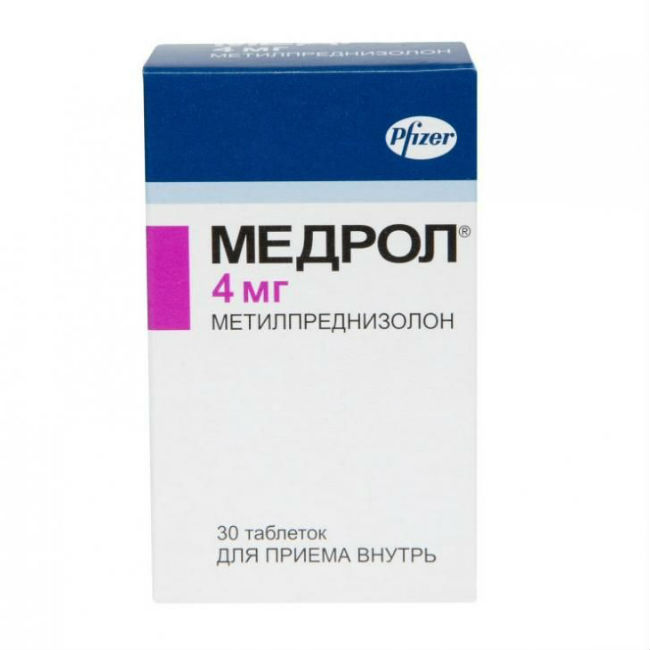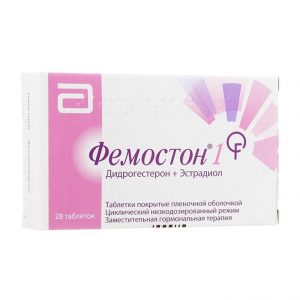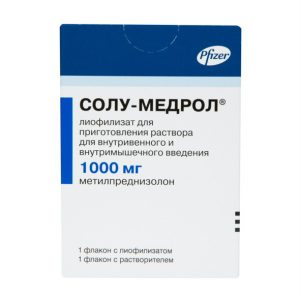Description
release form
tablets
packaging 30 pcs
Indications
Endocrine diseases:
primary and secondary adrenal insufficiency (drugs of choice hydrocortisone or cortisone, if necessary, synthetic analogues can be used in combination with mineralocorticoids, the addition of mineralocorticoids is of particular importance in pediatric practice)
congenital adrenal hyperplasia
chronic and subacute thyroid disease of the nodosa.
Diseases of the musculoskeletal system (including rheumatic) (as an additional treatment for short-term withdrawal from an acute condition or during exacerbation):
psoriatic arthritis
rheumatoid arthritis, including juvenile rheumatoid arthritis (in some cases, low-dose maintenance therapy may be required)
ankylosing spondylitis
acute and subacute bursitis
acute nonspecific tendosynitis
acute gouty arthritis
post-traumatic osteoarthritis osteoarthritis osteoarthritis osteoarthritis epithelitis.
Systemic diseases of the connective tissue (during an exacerbation or in some cases as maintenance therapy):
acute rheumatic heart disease
systemic lupus erythematosus
systemic dermatomyositis (polymyositis)
rheumatic polymyalgia
giant cell arteritis.
Skin diseases:
pemphigus
herpetiform bullous dermatitis
severe erythema multiforme (Stevens-Johnson syndrome)
exfoliative dermatitis
fungal mycosis
severe psoriasis
severe seborrheic dermatitis.
Allergic reactions (serious or disabling conditions in which conventional therapy is ineffective):
seasonal or perennial allergic rhinitis
serum sickness
bronchial asthma
contact dermatitis
atopic dermatitis
drug hypersensitivity reactions.
Eye diseases (severe acute and chronic allergic and inflammatory processes with eye damage):
allergic edge ulcers of the cornea
inflammation of the anterior segment of the eye
diffuse posterior uveitis and choroiditis
sympathetic ophthalmia
allergic conjunctivitis
keratitis
chorioretinitis
neuritis neuritis
Respiratory diseases:
symptomatic sarcoidosis
Leffler’s syndrome, not amenable to other therapy
berylliosis
fulminant or disseminated pulmonary tuberculosis in combination with appropriate anti-tuberculosis chemotherapy
aspiration pneumonitis.
Hematologic diseases:
idiopathic thrombocytopenic purpura in adults
secondary thrombocytopenia in adults
acquired (autoimmune) hemolytic anemia
erythroblastopenia (erythrocytic anemia)
congenital (erythroid anemia).
Oncological diseases (as palliative therapy):
leukemia and lymphoma in adults
acute leukemia in children.
Edematous syndrome:
to stimulate diuresis and achieve remission of proteinuria in patients with nephrotic syndrome without uremia, the idiopathic type, or caused by systemic lupus erythematosus.
Gastrointestinal diseases (for removing a patient from a critical condition):
ulcerative colitis
regional enteritis.
Nervous system diseases:
exacerbation of multiple sclerosis
cerebral edema, due to a brain tumor.
Other indications for use:
tuberculous meningitis with subarachnoid block or block threat (in combination with appropriate anti-TB chemotherapy)
trichinosis with damage to the nervous system or myocardium
organ transplantation.
Use during pregnancy and lactation
Use of Medrol during pregnancy is possible if the expected effect of therapy exceeds the potential risk to the fetus (adequate and strictly controlled safety studies have not been conducted). Women of childbearing age should be warned of the potential risk to the fetus (corticosteroids pass through the placenta). Nursing women are advised to stop either breastfeeding or the use of drugs, especially in high doses (corticosteroids pass into breast milk and can inhibit the production of endogenous corticosteroids, inhibit growth and cause unwanted effects in the offspring).
Composition
1 tablet contains:
Active ingredient: methylprednisolone 4 mg
Excipients: calcium stearate starch corn sucrose lactose.
Dosage and Administration
Inside. The dose can vary and should be selected individually depending on the nature of the disease and the patient’s response to therapy. The initial dose is from 4 to 48 mg / day, depending on the nature of the disease. In less severe diseases, lower doses are usually sufficient, although some patients may require higher doses. High doses may be required for diseases and conditions such as multiple sclerosis (200 mg / day), cerebral edema (200-1000 mg / day) and organ transplantation (up to 7 mg / kg / day). If after a sufficient period of time a satisfactory clinical effect is not obtained, the drug should be discontinued and a different type of therapy should be prescribed to the patient.
For children, the dose is determined by the doctor based on weight or body surface. With adrenal insufficiency – 0.18 mg / kg or 3.33 mg / m2 / day in 3 doses, with other indications – 0.42 1.67 mg / kg or 12.5 50 mg / m2 / day 3 tricks.
Discontinuation of the drug after prolonged therapy is recommended to be carried out gradually. If a good effect is obtained during treatment, an individual maintenance dose should be selected for the patient by gradually reducing the initial dose at regular intervals until the lowest dose is found to maintain the achieved clinical effect. It should be remembered that constant monitoring of the dosage regimen of the drug is necessary.
There may be situations in which dose adjustment is required, for example, changes in the clinical condition due to the onset of remission or exacerbation of the disease, individual patient response to the drug, as well as the impact on the patient of stressful situations that are not directly related to the underlying disease to which the therapy is directed. In the case, it may be necessary to increase the dose of the drug for a certain period of time, depending on the condition of the patient.
Alternating therapy.
Alternating therapy is a dosing regimen in which a doubled daily dose of glucocorticosteroids is administered every other day in the morning. The purpose of such therapy is to achieve the maximum clinical effect in a patient taking the drug for a long time while minimizing some undesirable effects, such as suppression of the pituitary-adrenal system, glucocorticosteroid withdrawal syndrome, and growth retardation in children.
Side effects of
Metabolism: sodium retention, chronic heart failure in patients with an appropriate predisposition, increased blood pressure, fluid retention in the body, potassium loss and hypokalemic alkalosis, negative nitrogen balance due to protein catabolism.
From the musculoskeletal system: steroid myopathy, muscle weakness, osteoporosis, pathological fractures, compression fractures of the vertebrae, aseptic necrosis of the pineal gland epiphyses, tendon ruptures, especially the Achilles tendon.
From the digestive system: peptic ulcer with possible perforation and bleeding, gastric bleeding, pancreatitis, esophagitis, perforation of the intestine. After treatment with corticosteroids, an increase in serum ALT, ACT, and alkaline phosphatase activity was observed. Usually these changes are minor not associated with any clinical syndromes and reversible after discontinuation of treatment.
Dermatological reactions: slow healing of wounds, petechiae and ecchymosis, thinning and decrease in skin strength.
From the nervous system: increased intracranial pressure, pseudotumor of the brain, mental disorders, convulsions.
From the endocrine system: menstrual irregularities, hirsutism, the development of Cushing’s syndrome, suppression of the pituitary-adrenal system, decreased carbohydrate tolerance, latent diabetes mellitus, increased insulin or oral hypoglycemic agents in children with diabetes, growth retardation in children.
From the side of the organ of vision: posterior subcapsular cataract, increased intraocular pressure with a risk of damage to the optic nerve, exophthalmos.
Allergic reactions: hypersensitivity reactions, including allergic systemic reactions, it is possible to suppress reactions during skin tests.
Other: erased clinical picture in infectious diseases, activation of latent infections, the occurrence of infections caused by opportunistic pathogens, GCS withdrawal syndrome.
Drug Interaction
Increases toxicity of cardiac glycosides (due to hypokalemia due to increased risk of arrhythmias). Accelerates the elimination of ASA, decreases its concentration in the blood (with the withdrawal of methylprednisolone, the concentration of salicylates in the blood increases and increases the risk of side effects). When used with live antiviral vaccines and against other types of immunizations, it increases the risk of virus activation and the development of infections. It increases the metabolism of isoniazid, mexiletine (especially in fast acetylators), which leads to a decrease in their plasma concentrations. Increases risk of hepatotoxic reactions of paracetamol (induction of liver enzymes and formation of toxic metabolite of paracetamol). Increases (with prolonged therapy) the content of folic acid. Hypokalemia caused by ACS may increase the severity and duration of muscle blockade against muscle relaxants. High doses reduce the effect of somatropin. Antacids reduce the absorption of ACS. Reduces the effect of hypoglycemic drugs increases the anticoagulant effect of coumarin derivatives. Reduces the effect of Vitamin D on Ca2 + absorption in the intestinal lumen. Ergocalciferol and parathyroid hormone interfere with the development of osteopathy caused by ACS. Reduces the concentration of praziquantel in the blood. Ketoconazole reduces the clearance and increases the toxicity of methylprednisolone. Co-administration with ciclosporin causes mutual inhibition of metabolism – the risk of side effects of both drugs (with joint use, cases of seizures have been noted). Thiazide diuretics, carbonic anhydrase inhibitors, other ACS and amphotericin B increase the risk of hypokalemia, Na +-containing drugs – edema and increased blood pressure. NSAIDs and ethanol increase the risk of ulceration of the gastrointestinal mucosa and bleeding, in combination with NSAIDs for the treatment of arthritis may reduce the dose of ACS due to the summation of therapeutic effect. Indomethacin, ousting methylprednisolone from its connection with albumin increases the risk of its side effects. Amphotericin B and carbonic anhydrase inhibitors increase the risk of osteoporosis. The therapeutic effect of ACS is decreased under the influence of phenytoin, barbiturates, ephedrine, theophylline, rifampicin and other inducers of hepatic microsomal enzymes (increase in metabolic rate). Mitotane and other inhibitors of adrenal cortex function may necessitate an increase in the dose of ACS. The ACS clearance is increased against the background of thyroid hormones. Immunosuppressants increase the risk of infection and lymphoma or other lymphoproliferative disorders associated with the Epstein-Barr virus. Estrogens (including oral estrogen-containing contraceptives) reduce the clearance of ACS, prolong T1 / 2 and their therapeutic and toxic effects. The appearance of hirsutism and acne is facilitated by the simultaneous use of other steroid hormonal drugs – androgens, estrogens, anabolic agents, oral contraceptives. Tricyclic antidepressants can increase the severity of depression caused by taking ACS (not shown for the treatment of these side effects). The risk of developing cataracts increases with the use of other ACS, antipsychotic drugs (neuroleptics), carbutamide and azathioprine. Concurrent administration with m-cholin blockers (including antihistamine drugs, tricyclic antidepressants), nitrates contributes to the development of increased intraocular pressure.
overdose
The clinical syndrome of acute drug overdose has not been described. Acute toxicity reports of ACS overdose are extremely rare.
Symptoms: Frequent repeated dosing (daily or several times a week) for a long time may lead to the development of Cushing’s syndrome and other complications characteristic of long-term ACS therapy.
Treatment: carrying out symptomatic therapy. Methylprednisolone is excreted in dialysis. There is no specific antidote.
Storage conditions
In the dark place at a temperature of no higher than 20 ° C.
Expiration
5 Chron
Deystvuyuschee substances
methylprednisolone
Dosage form
dosage form
tablets




